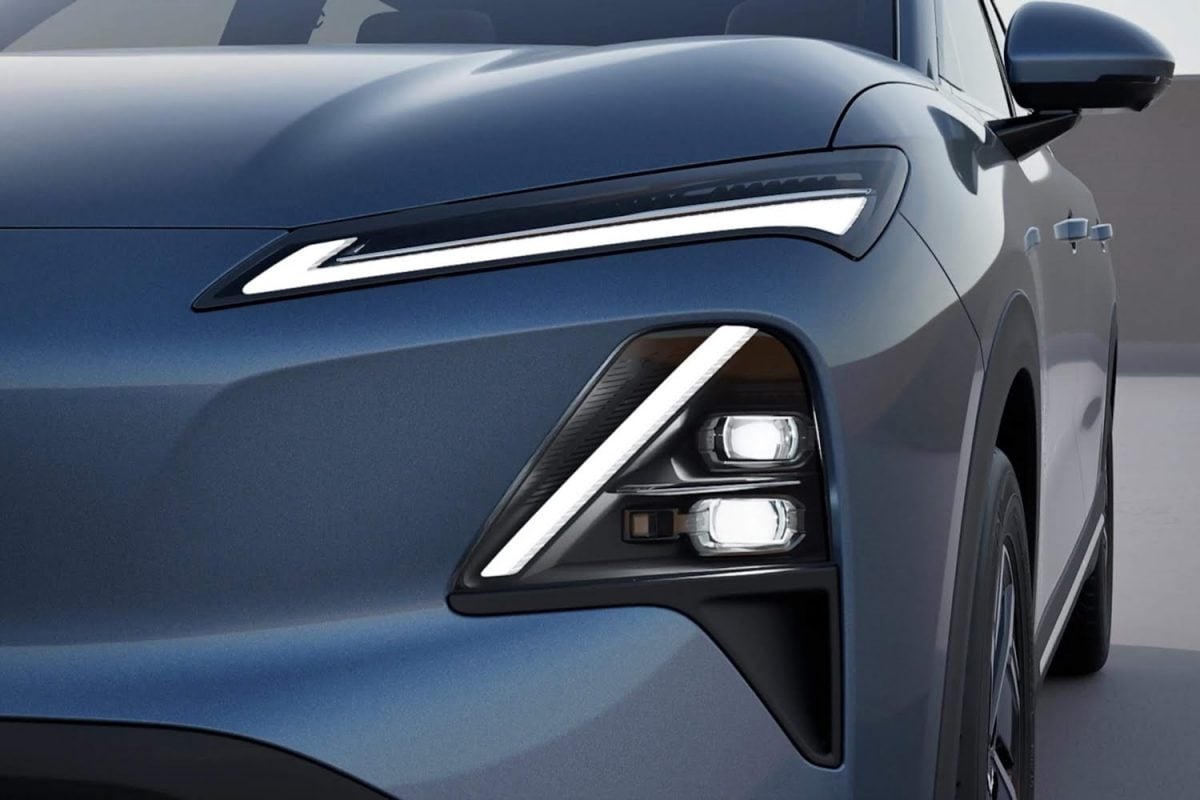Luxury Car Brands Face Headwinds In The Chinese Market

Table of Contents
The Rise of Domestic Chinese Car Brands
The Chinese automotive industry has undergone a remarkable transformation. Domestic brands are no longer simply offering budget-friendly options; they're aggressively competing in the luxury segment, capturing significant market share. This surge is fueled by substantial investments in research and development (R&D), leading to technologically advanced features and improved vehicle quality. Brands like Hongqi, Nio, and Li Auto are prime examples, successfully challenging established players with their competitive pricing, stylish designs, and innovative technologies.
- Increased investment in R&D by Chinese automakers: Billions are being poured into developing cutting-edge technologies, including electric powertrains, advanced driver-assistance systems (ADAS), and connected car features.
- Improved quality and design of domestic vehicles: Chinese manufacturers are prioritizing quality control and design aesthetics, resulting in vehicles that are increasingly comparable to, and in some cases exceeding, international counterparts.
- Strong marketing campaigns targeting Chinese consumers: Sophisticated marketing strategies leverage social media and digital channels to resonate with younger, tech-savvy consumers.
- Government support for the domestic auto industry: Government policies and incentives actively encourage the growth and development of domestic car brands, further bolstering their competitiveness.
Shifting Consumer Preferences in China
The Chinese luxury car buyer is evolving. While status remains a factor, younger consumers are increasingly prioritizing sustainability, technology, and personalized experiences. The burgeoning popularity of electric vehicles (EVs) and new energy vehicles (NEVs) perfectly illustrates this shift. Luxury car brands need to adapt their offerings and marketing strategies to resonate with this changing demographic. Brand storytelling and creating an emotional connection are crucial for forging lasting relationships.
- Younger generation's preference for technology and sustainability: Features like advanced infotainment systems, autonomous driving capabilities, and electric powertrains are becoming key purchase drivers.
- Increased demand for personalized and customized vehicles: Consumers seek vehicles that reflect their individual tastes and lifestyles, demanding greater levels of customization and personalization options.
- Greater focus on brand image and social status: While the importance of status persists, it’s evolving; consumers are looking beyond traditional luxury badges and are drawn to brands that align with their values.
- Growing awareness of environmental concerns: Sustainability is a significant consideration, driving demand for fuel-efficient and environmentally friendly vehicles, particularly EVs.
Economic Slowdown and Geopolitical Uncertainty
China's economic slowdown, coupled with geopolitical uncertainties and trade tensions, creates further headwinds for luxury car brands. Reduced consumer spending, supply chain disruptions, and increased import tariffs all contribute to a challenging operating environment. Navigating the complex regulatory landscape, including data privacy and cybersecurity regulations, adds another layer of complexity.
- Decreased consumer spending due to economic uncertainty: Economic anxieties lead to reduced discretionary spending, impacting luxury goods purchases, including high-end vehicles.
- Impact of supply chain disruptions on vehicle production: Global supply chain issues can lead to production delays and shortages, further affecting market availability and sales.
- Increased import tariffs and taxes on luxury vehicles: Higher import duties can significantly increase the price of imported luxury cars, reducing their competitiveness against domestically produced alternatives.
- Challenges related to data privacy and cybersecurity regulations: Compliance with evolving data regulations is essential for operating legally and maintaining consumer trust.
Strategies for Success in the Chinese Market
Luxury car brands need to adopt proactive strategies to overcome these challenges. Localization is key; understanding Chinese consumer culture, preferences, and expectations is paramount. Building strong relationships with local dealers and cultivating positive consumer experiences are also essential.
- Investing in electric vehicle technology and infrastructure: A strong commitment to EVs and supporting charging infrastructure is crucial to meeting the growing demand for sustainable luxury transportation.
- Developing tailored marketing campaigns for the Chinese market: Marketing strategies must be specifically designed to resonate with the unique cultural nuances and preferences of Chinese consumers.
- Strengthening partnerships with local dealers and distributors: Robust partnerships are essential for efficient distribution, effective after-sales service, and strong market penetration.
- Prioritizing customer service and after-sales support: Providing exceptional customer service, including convenient maintenance and repair options, builds brand loyalty and trust.
Navigating the Headwinds: A Future for Luxury Cars in China?
Luxury car brands face significant challenges in the Chinese market, including the rise of domestic competitors, evolving consumer preferences, and macroeconomic headwinds. Adapting to these changes requires a multifaceted approach: embracing electric vehicle technology, understanding Chinese consumer culture, and building strong local partnerships. The future of luxury car sales in China depends on the ability of these brands to strategically adapt and innovate. Further research into consumer behavior, technological advancements, and evolving government regulations is crucial. To learn more about navigating the complexities of the Chinese automotive market, explore resources from organizations like the China Association of Automobile Manufacturers (CAAM). The continued success of luxury car brands in China hinges on their ability to effectively address the headwinds they face.

Featured Posts
-
 The U S Missile System Fueling Sino American Tensions
May 20, 2025
The U S Missile System Fueling Sino American Tensions
May 20, 2025 -
 Wwe Money In The Bank Ripley And Perez Punch Their Tickets
May 20, 2025
Wwe Money In The Bank Ripley And Perez Punch Their Tickets
May 20, 2025 -
 Delving Into The World Of Agatha Christies Poirot
May 20, 2025
Delving Into The World Of Agatha Christies Poirot
May 20, 2025 -
 Michael Schumacher Une Petite Fille Pour Son Premier Petit Enfant
May 20, 2025
Michael Schumacher Une Petite Fille Pour Son Premier Petit Enfant
May 20, 2025 -
 Aghatha Krysty Fy Esr Aldhkae Alastnaey Mstqbl Alktabt Albwlysyt
May 20, 2025
Aghatha Krysty Fy Esr Aldhkae Alastnaey Mstqbl Alktabt Albwlysyt
May 20, 2025
